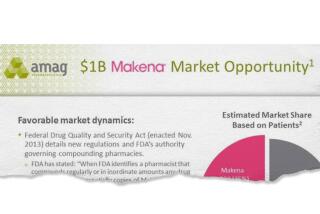Doctors Should Prescribe Tried-and-True Over New Drugs
- Share via
Newly approved drugs are riskier than older ones and doctors should avoid prescribing them when equally effective and long-used medications are available, according to a study in Wednesday’s Journal of the American Medical Assn.
In a provocative review of a quarter-century of unexpected and harmful side effects from the most innovative new prescription drugs, the authors found that more than 10% either had been taken off the market or required new warnings against dangerous “adverse reactions.”
“Based on our results and those of others, clinicians should avoid using new drugs when older, similarly (effective drugs) are available,” the authors conclude. “Patients who must use new drugs should be informed of the drug’s limited experience and safety record.”
The findings add to the increasingly contentious debate over whether the Food and Drug Administration is doing enough to protect consumers from the risks posed by new drugs.
Among the medications taken off the market in 2000 are the nighttime heartburn drug Propulsid (removed because of fatal heart rhythm abnormalities), the diabetes drug Rezulin (removed after causing liver failure), and the irritable bowel syndrome treatment Lotronex (removed for causing fatal constipation and colitis.)
While the FDA’s job is to assure that drugs coming on the market are safe and effective, officials there acknowledge that a small number of harmful side effects undetected during pre-market trials are inevitably discovered only after a drug is approved and used by millions of patients.
Because the FDA approved many more drugs during the 1990s than in previous decades, more unexpected harmful side effects are appearing.
“Our data found that only half of all serious adverse reactions are detected seven years after a drug enters the market,” said the study’s lead author, Karen Lasser. “Millions of patients are exposed to potentially unsafe drugs each year.”
In an accompanying commentary in the journal, a top official with the FDA’s Center for Drug Evaluation and Research Policy, Robert Temple, argued that the study’s assessment of the agency’s track record on safety issues was misleading. He said many of the warnings added after drugs were on the market were added because of subsequent scientific discoveries or because medications known to be toxic turned out to be more toxic than expected.
“This is a useful study,” Temple said in an interview. “But when I looked more carefully, many of the problems described are not good reasons to avoid using a new drug.... Patients needn’t be nervous about using new drugs prescribed by their doctors.”
Temple said that recent changes in how drugs are developed should help limit the number of problematic side effects in the future. He also said that regulators are now focused in particular on potential liver damage from new drugs, the cause of some of the most significant drug withdrawals.
The drug industry trade group Pharmaceutical Research and Manufacturers of America, or PhRMA, on Tuesday attacked the JAMA study as “misinformed and misleading.”
“We note that Dr. Lasser et al. state that the benefit/risk ratio of new medicines sometimes shifts as new information is acquired after marketing, but they fail to state that it often shifts to the benefit side,” PhRMA said in a statement. “For example, cholesterol-lowering drugs have been found after marketing to have significant additional benefits.”
But Sidney Wolfe of Public Citizen’s Health Research Group, a doctor and co-author on the JAMA study, said that despite FDA assurances, significant safety problems remain. “Rather than getting better, we believe the situation is just as bad, or worse,” he said.
The authors of the study, most from Cambridge Hospital and Harvard Medical School, used FDA announcements and the Physicians’ Desk Reference--an annual compendium of drugs on the market--to study how many medications were withdrawn and how many required new safety notices to doctors, called “black box” warnings. Between 1975 and 1999, they report, 548 new chemical entities were approved by the FDA as prescription drugs, and 56 were either withdrawn or given new black box warnings.
Because many of the 548 drugs were approved recently, the researchers used a probability analysis to estimate how many would require FDA action in the future. Based on experience, they concluded that about 20% of the drugs would acquire a new black box warning over a 25-year period or would be taken off the market.




